I know there’s a golf ball on the moon. I also know that there’s an American flag on the moon. What The Museum on the Moon taught me, among other things, is that the flag was mounted on a metal frame to make it appear that the wind was blowing on the moon, thus providing the illusion that it was flying. The book’s subtitle, The Curious Objects on the Lunar Surface, lets you in on the fact that these tidbits exist, and it does so in the most surprising of ways, via poetry.
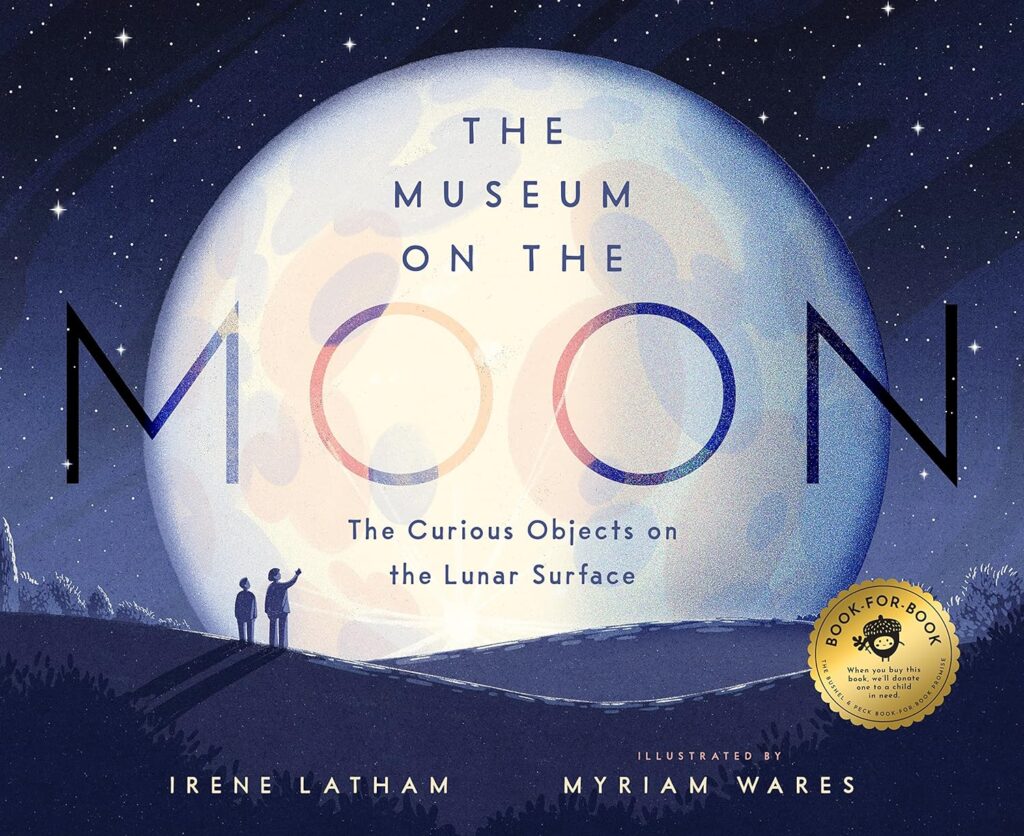
The amount of unconventional poetry that’s been creatively adapted with certain stories has convinced me that not all poetry is stodgy limericks that have the secondary effect of making me sleepy. Poetry can be short. Poetry can be STEM. Poetry can be both of those in the same package or have its own characteristics. The Museum on the Moon is a picture book that has poetry. However, there’s also a full-page glossy illustration that shows said curious object on the moon. Then, to the far left, or right of that image, there is a small paragraph that details the non-fiction, lunar landing happening that led to whatever object was left on the moon.
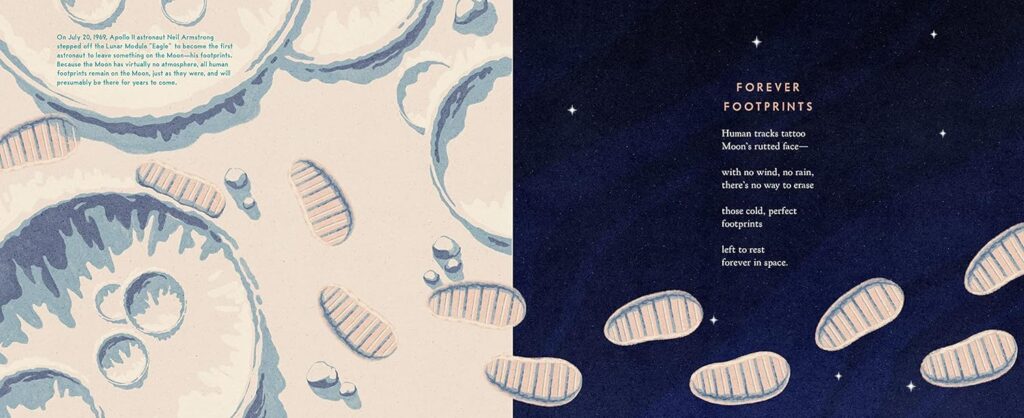
Astronaut Charles Duke was part of the Apollo 16 mission in 1972. Currently, somewhere on the surface of the moon there’s a family portrait of him, his wife, and two sons. Neil Armstrong left a small replica of an olive branch on the moon as a symbolic gesture for peace on planet Earth. When Apollo II left the surface of the moon they were 48 pounds heavier due to all of the rocks, sand and alien bodies that they discovered.* In order to accommodate these new objects they had to jettison all manner of things that they brought with them or that they discovered weren’t that necessary or comfortable. The armrests were too long and uncomfortable, so they ripped them off and left them there. Likewise, their cooking utensils and heavy television camera were cast out so that the calculus of getting the vehicle back to Earth could do its thing.
The poems are short, on average they are six stanzas with two lines in each one, and effortless to read. They add context and interest to the illustrations, while the paragraph text finishes the hat trick by adding more details that allow audiences to use their imaginations and think about something common yet out of this world.
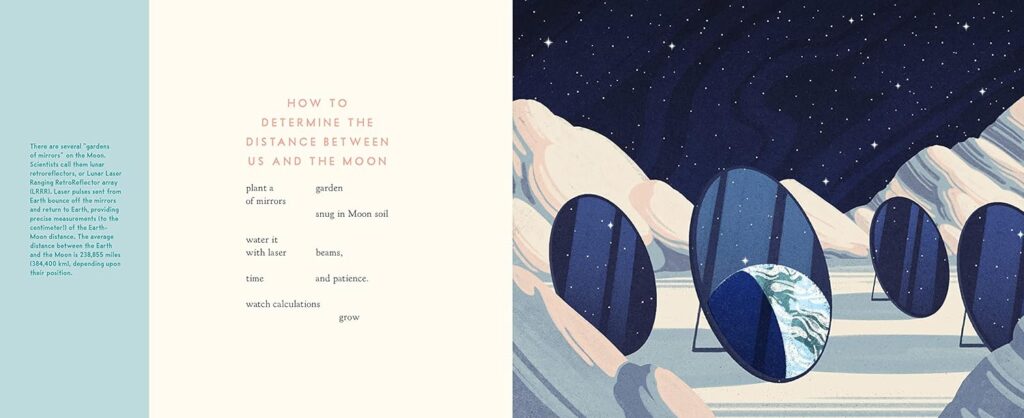
The title, The Museum on the Moon, also engages young audiences to think about the impossible. They know what a museum is, and they know what the moon is, but there is not a museum on the moon. Contrary thinking or stating the impossible in a statement of fact is a great way to hook in readers of any age. Our 12-year-old is like that because he goes with a contrary statement, or the most uncommon outcome, and then tries to defend it. As a parent and teacher, we do love it when questions are put forth, but we encourage him to try the easiest solution first, and then see if the least likely path is the correct one.
The Museum on the Moon embraces that chaos and pairs it with dreamy illustrations, short poetic statements, and short paragraphs to hit reluctant STEM people right in their interest area. I don’t like science…,but look at the art, now think about this interesting fact that you’ll discover in a short poem-now dig deeper by discovering what mission it all happened on. Your target audience probably has no idea about the specifics of any lunar mission. They might know that a couple of people have walked on its surface, but certainly can’t fathom what a technical feat it is to land something there, and then have it return safely back to Earth.
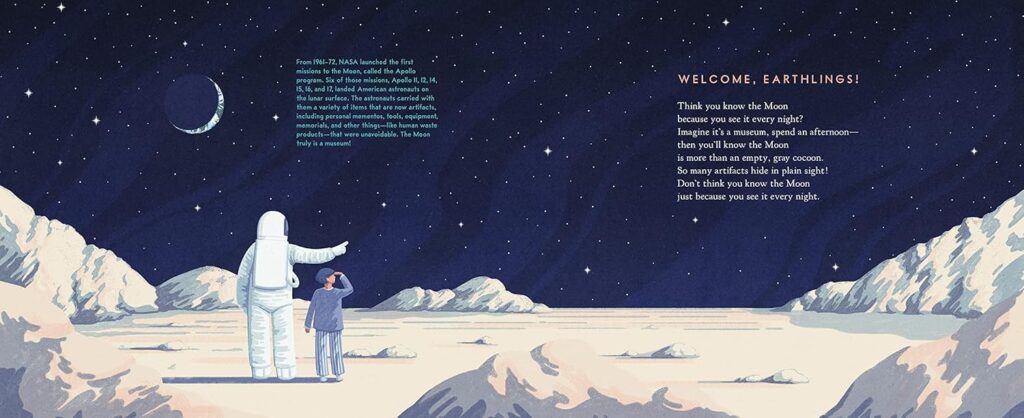
The landscape format of The Museum on the Moon helps emphasize the scale and desolation of our infrequent trips there. As Alan Shepard hits a golf ball on the moon’s surface readers see a massive swath of stars that are set against a skinny panorama of moonscape. On pages like these, your eye really wander, in the best of all possible ways, that allow you to relax and enjoy the book, its images, the poetry and the wonder of space exploration.
The Museum on the Moon: The Curious Objects on the Lunar Surface is by Irene Latham with illustrations by Myriam Wares and is available on Moonshower, an imprint of Bushel & Peck Books.
*That’s a joke. The alien bodies were discovered on the floor of the Pacific Ocean.
There are affiliate links in this post.

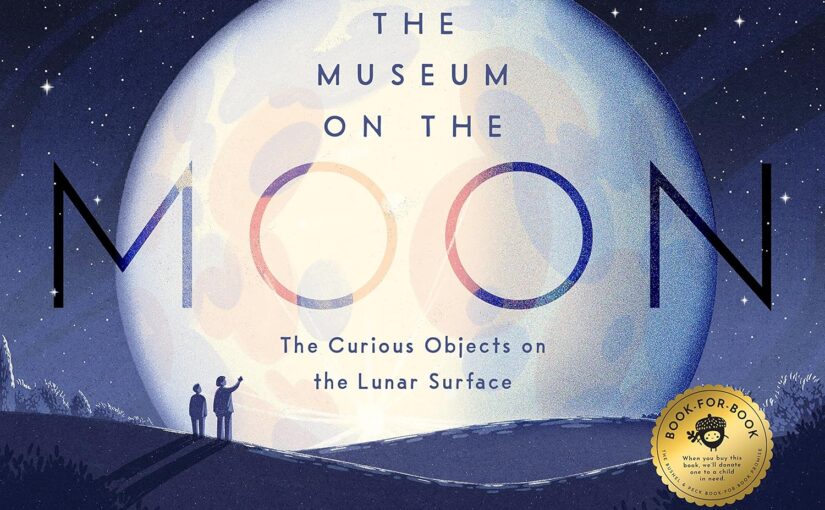



 Facebook
Facebook Twitter
Twitter Flickr
Flickr GooglePlus
GooglePlus Youtube
Youtube